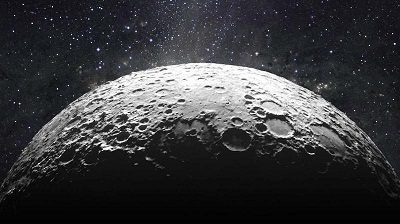
NASA scientists have found evidence of frost on Earth’s moon. NASA’s Lunar Reconnaissance Orbiter, or LRO, helped scientists find this evidence by identifying bright areas in craters near south pole of the moon. According to scientists, these areas are so cold that could be having frost present on the surface.
In their research, scientists analyzed moon’s surface temperatures as well as information about how much light is reflected off the surface.
“We found that the coldest places near the moon’s south pole are also the brightest places—brighter than we would expect from soil alone—and that might indicate the presence of surface frost,” said Elizabeth Fisher, the lead author of the study.
The icy deposits look thin and patchy, and it is likely that they are mixed in with the surface layer of soil, dust and small rocks called the regolith. The researchers say they are seeing signs of surface frost. The frost was identified in cold traps near the moon’s South Pole. Cold traps are the areas that do not receive direct sunlight. The temperature there remains below -163°C (-260°F), allowing ice to stay frozen for millions or billions of years.
John Keller, the LRO project scientist at NASA’s Goddard Space Flight Center in Greenbelt, Maryland says these findings “demonstrate once again the value of studying the moon from orbit long-term.”
“All of this work begins with comprehensive data sets made up of years’ worth of continuous measurements.”
The results of this study are consistent with another study that analyzed reflected starlight and the UV skyglow of hydrogen to reveal areas of elevated surface brightness.
“What has always been intriguing about the moon is that we expect to find ice wherever the temperatures are cold enough for ice, but that’s not quite what we see,” said Matt Siegler, a researcher with the Planetary Science Institute in Dallas, Texas, and a co-author on the study.
The detailed findings of the study have been published in Icarus.